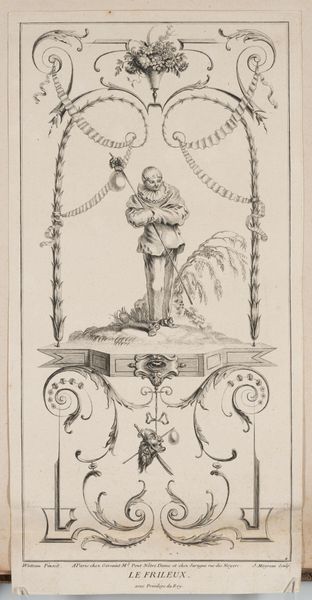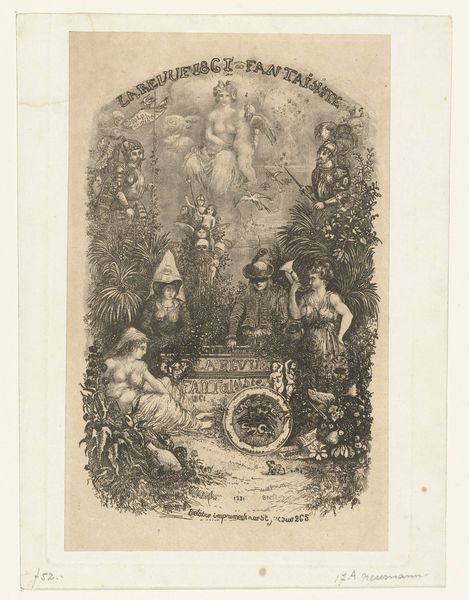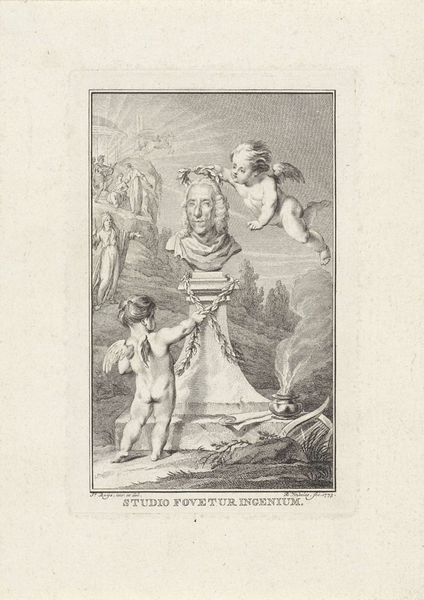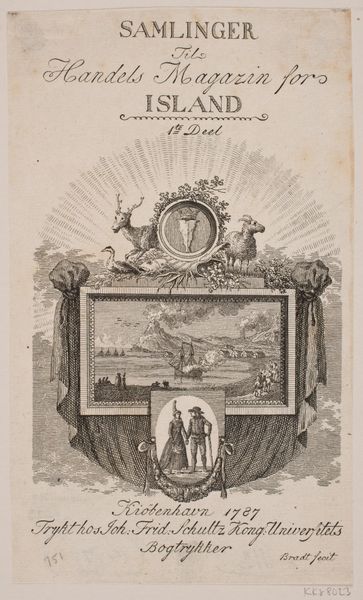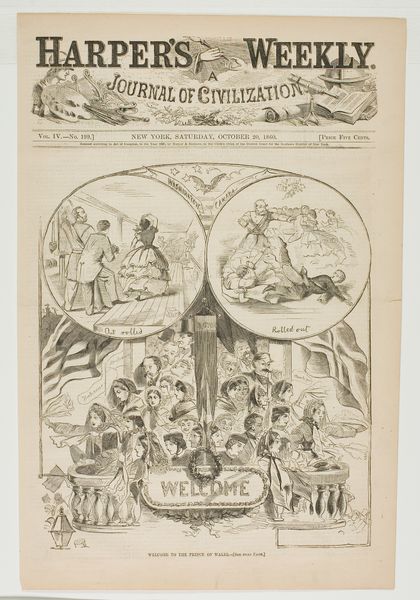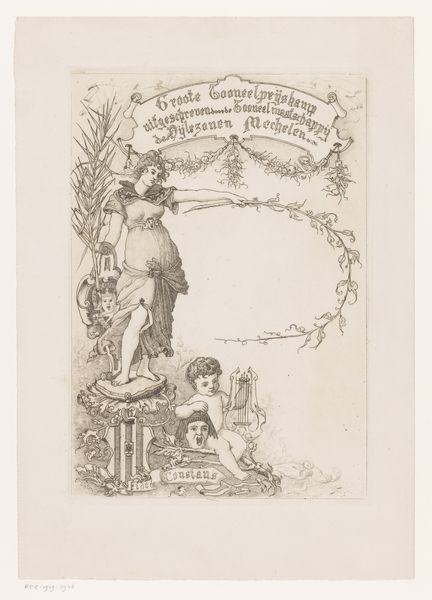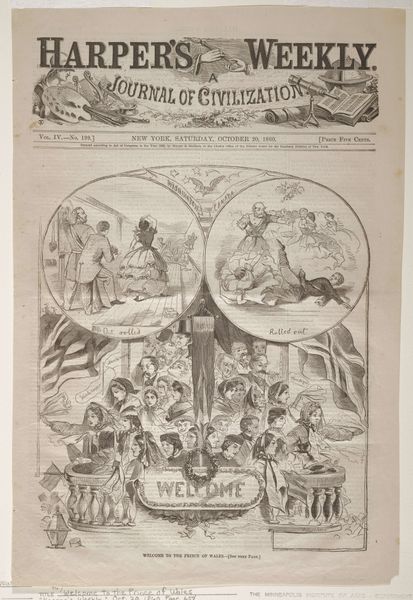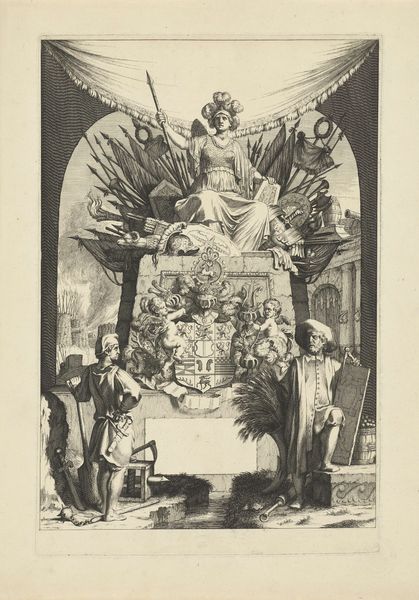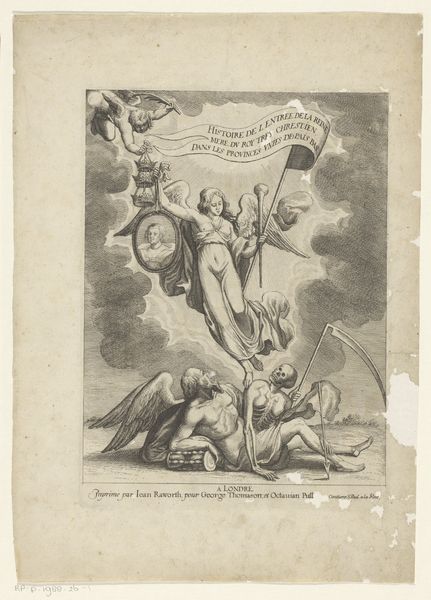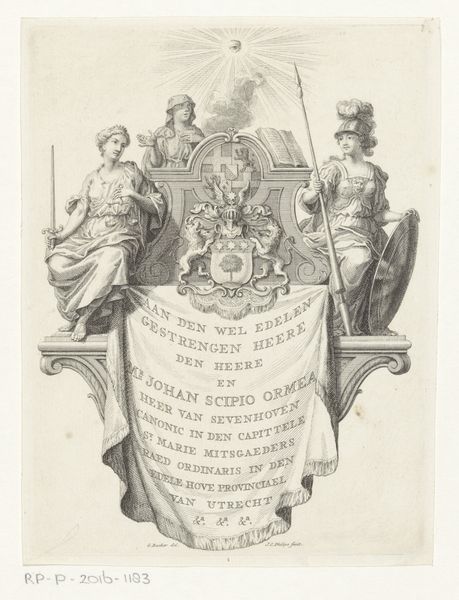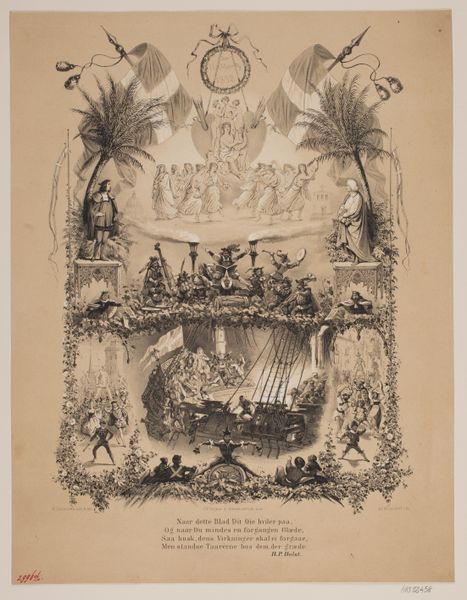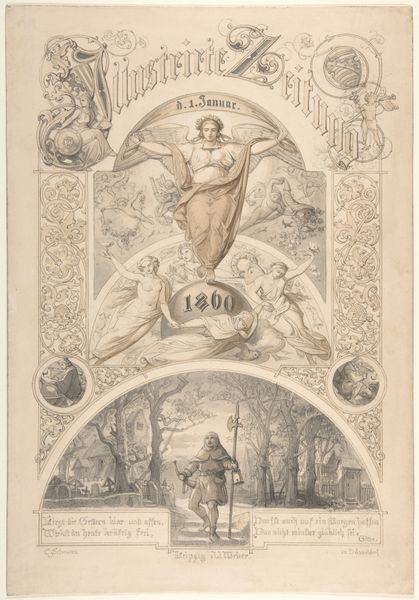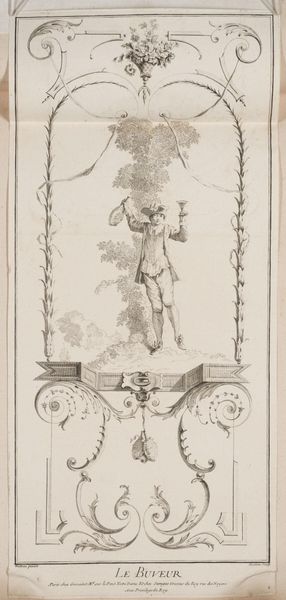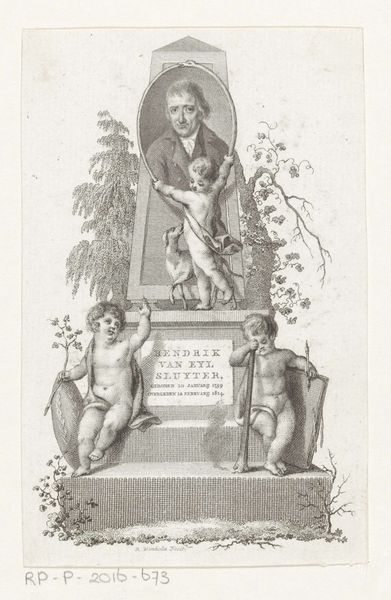
drawing, print, etching, paper
#
drawing
#
allegory
# print
#
etching
#
paper
#
symbolism
#
nude
#
erotic-art
Dimensions: 195 × 130 mm (image); 216 × 151 mm (plate); 272 × 171 mm (sheet)
Copyright: Public Domain
Félicien Rops created this etching, now at the Art Institute of Chicago, in the late 19th century. Look at the central figure, a nude woman adorned with flowers and leaves, standing upon a pedestal inscribed with the Latin phrase, "Naturalia non sunt turpia"—"natural things are not shameful". This bold declaration echoes ancient fertility rituals, where the unadorned human form was celebrated as a symbol of life and abundance. Above the woman, cherubic figures float, reminiscent of Renaissance depictions of divine presence. But notice, these cherubs seem to be tumbling, almost chaotic, suggesting a subversion of traditional religious iconography. The imagery of the nude, garlanded figure has persisted through millennia, appearing in ancient Greek bacchanals and Roman celebrations of Venus. Yet, Rops infuses this classical motif with a distinctly modern sensibility, questioning societal norms and exploring the complex relationship between nature, beauty, and morality. This collision of tradition and modernity engages our subconscious, challenging us to confront our own preconceptions about the body and the natural world. The symbol returns to the collective memory, but its meaning has been transformed.
Comments
No comments
Be the first to comment and join the conversation on the ultimate creative platform.
